WHAT YOU NEED TO KNOW: Governor Newsom’s trip to China was about delivering real climate action and creating opportunities for future collaboration and cooperation.
SACRAMENTO – Tensions between the United States and China have been on the rise over the past five years. Governor Gavin Newsom’s visit to China has helped thaw relations and builds on the Biden Administration’s efforts to continue an open dialogue with China, which serves as an important competitor and partner to the U.S.
The Governor was the first American Governor to visit China in over 4 years and follows a sequence of high-level U.S. officials traveling to China to support efforts to stabilize relationships between the two nations.
As President Biden said, American leadership is what holds the world together and American alliances are what keep us safe. Because of California’s history with China on climate cooperation, and our world-leading climate efforts, our state can serve as a bridge on one of the most consequential issues of our time.
China and the U.S. are very different countries, and we won’t agree on everything. But we face a shared threat in climate change. Emissions and pollution do not stop at borders. We can either refuse to work with the world’s largest carbon emitter, or we can find areas of alignment, like climate, in order to open the door to diplomacy and exert pressure on other critical concerns. Continuing our partnership with China on climate is a way of keeping lines of communication open so that we can continue engaging on a host of issues. That’s the California way.
Governor Newsom’s trip prioritized three goals – advancing climate action and cooperation, promoting economic development and tourism, and strengthening cultural ties.
CLIMATE ACTION & COOPERATION
The fate of the world relies on climate cooperation with China.
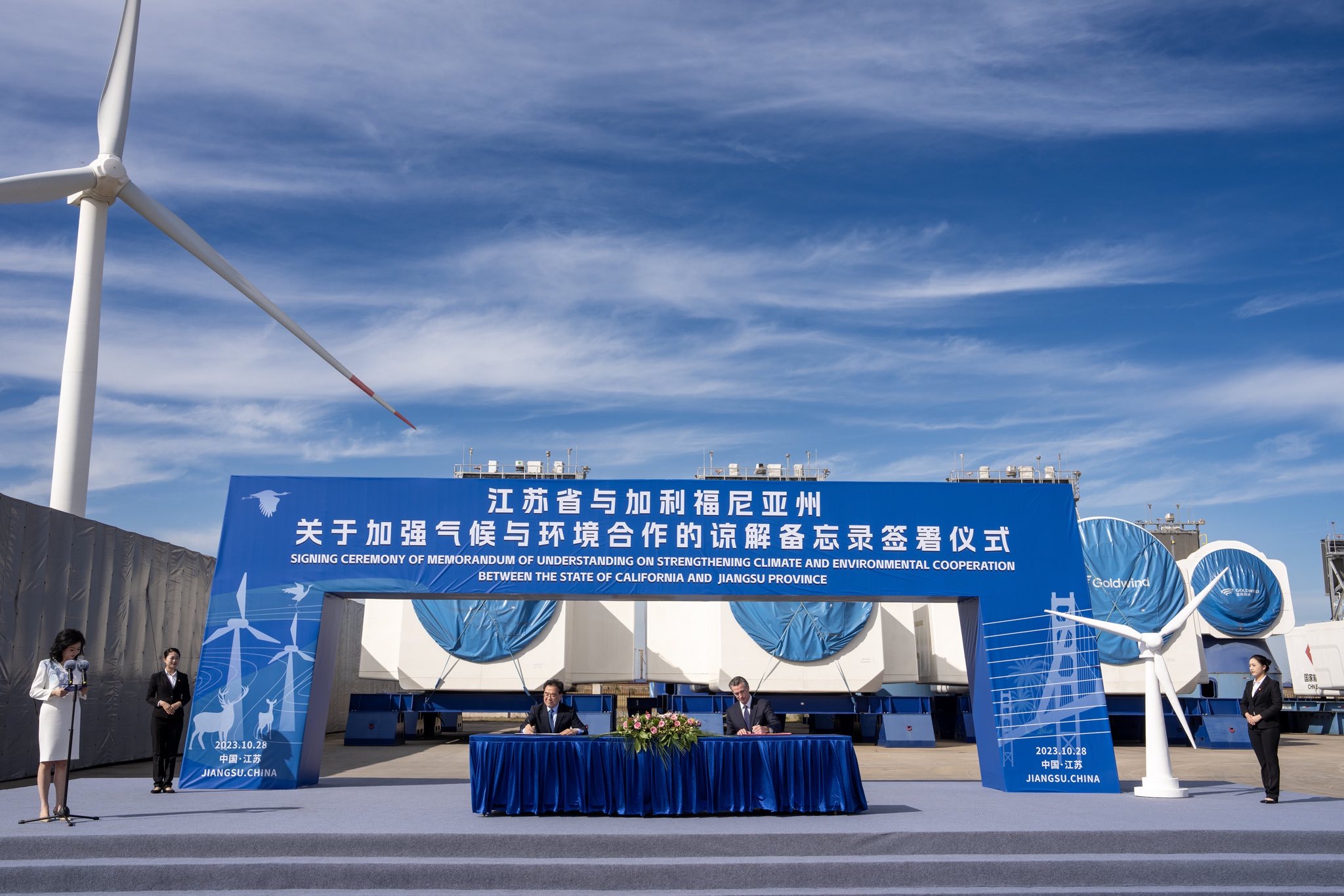
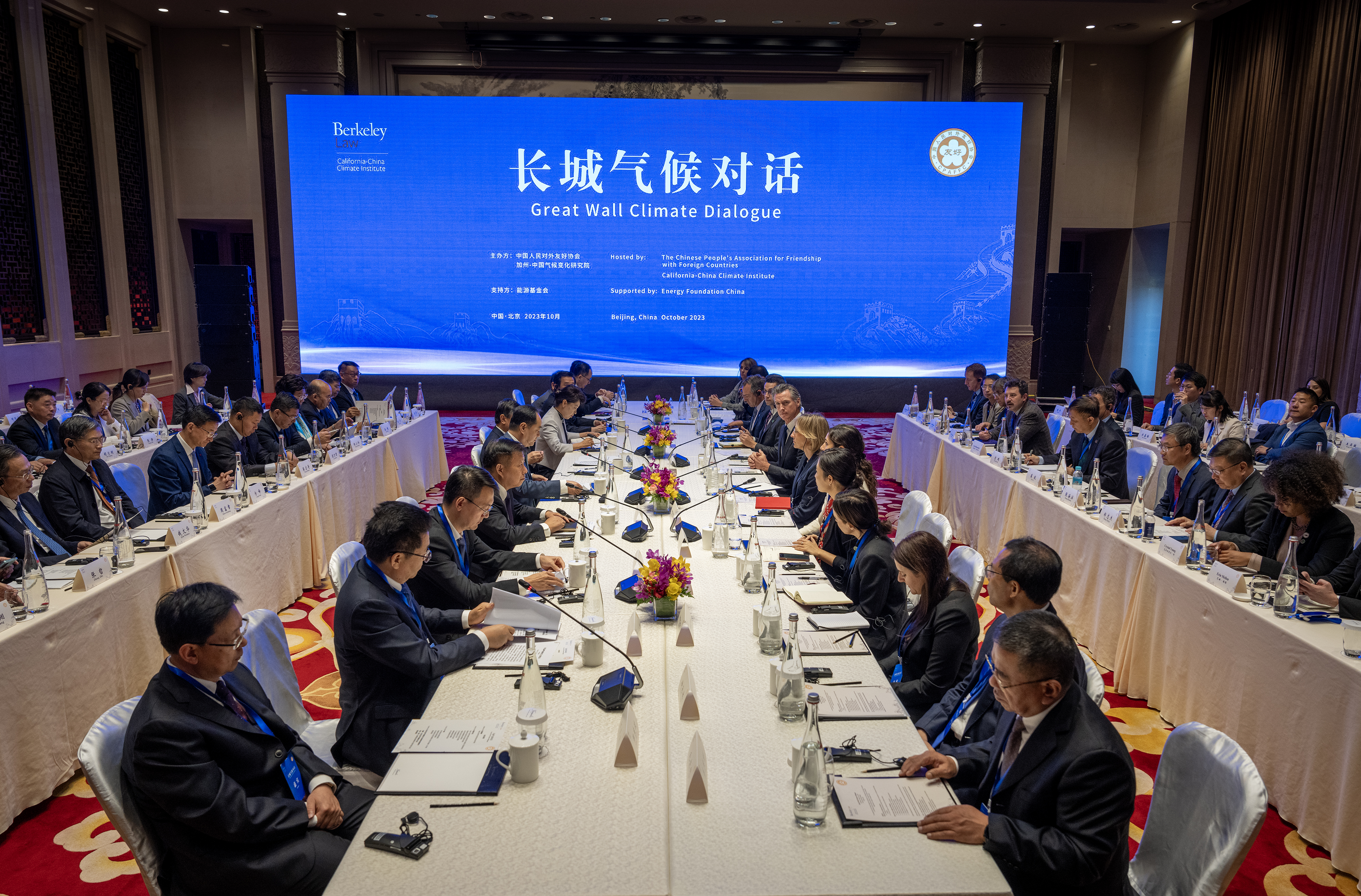
“When it comes to climate, it’s a G2 issue. The United States and China make up 42% of global emissions. We can’t be serious about climate change without working together.
We are here to make our climate ambitions clear and not let silence be the loudest sound either side hears.”
Governor Gavin Newsom
The Governor’s trip continued a 15+ year bipartisan tradition dating back to former Governors Brown and Schwarzenegger.
China is the world’s largest emitter, accounting for nearly one third of all global greenhouse gas emissions. No matter how much action California takes to cut pollution and transition away from fossil fuels, fully resolving the climate crisis requires global action far beyond California’s borders. The Governor’s meetings with Chinese leadership resulted in a first-of-its-kind declaration by China and California to cooperate on subnational climate action like aggressively cutting greenhouse gas emissions, transitioning away from fossil fuels, and developing clean energy.
California and China have made meaningful progress over the years:
- To date, China’s cap and trade program only covers the power sector. In California, cap and trade covers the power, transportation and industrial sectors. Last year, California signed an MOU with China’s Ministry of Ecology and Environment and since then, California and China have had multiple dialogues on their carbon markets driving toward broadening beyond the power sector. Just last week, China announced they would be extending their carbon market to include transportation and industrial sectors.
- California has long been an international leader on clean air, with one of the most influential regulatory agencies in the California Air Resources Board (CARB). Through MOUs, CARB has hosted dozens of delegations every year, half of which come from China, to visit our field and testing sites and learn about how we design our air quality planning and regulatory enforcement programs. This collaboration was pivotal to China’s successful reduction in air pollution over the last 15 years. Beijing’s air regulations are modeled off of California’s regulations and Beijing has achieved a 95% drop in coal consumption, and dramatically cleaner air for the more than 21 million residents of the Chinese capital.
- In 2005, Chinese officials from Shanghai visited the port of Long Beach and saw that ships were plugged in instead of burning dirty fuel while at the port. Just a few years later, the Shanghai port – the largest in the world – shifted to 100% electric. The ports now collaborate together to advance the world’s first green shipping corridor.
On this trip, California signed five Memorandums of Understanding (MOU) – with China’s National Development and Reform Commission, the provinces of Guangdong and Jiangsu, and the municipalities of Beijing, and Shanghai. These MOUs advance California and China’s work on climate policy and help set the stage for national discussions and partnerships.
- National Development and Reform Commission: California and China will work on joint activities that decarbonize the power sector, planning efforts that reduce greenhouse gas emissions, such as California’s Scoping Plan and China’s Five-Year Planning Process, and action that will accelerate the deployment of clean energy. MOU here.
- Guangdong: Building on the long history of cooperation between California and Guangdong, we will work together on power and industrial decarbonization, carbon markets and actions that reduce short-lived climate pollutants, including methane. MOU here.
- Jiangsu: As the center of clean energy innovation in China, California and Jiangsu will collaborate on clean energy deployment, especially offshore wind, and on nature-based solutions and efforts to protect biodiversity. MOU here.
- Beijing: California and Beijing have a long history of collaboration on air quality, and this renewed MOU expands our cooperation to include climate adaptation given the recent flooding in Beijing and California, as well as broader climate mitigation strategies. MOU here.
- Shanghai: In a first-of-its-kind MOU between California and Shanghai, the two jurisdictions will build on the LA-Shanghai green shipping corridor to explore joint action we can take to decarbonize the transportation sector more broadly, including zero-emission vehicles and trucks, public transit, and more. MOU here.
Beginning immediately, California agencies and departments will initiate next steps toward implementing the MOUs with their Chinese counterparts. This work includes forming working groups, conducting bilateral meetings, establishing formal work plans, and planning site and delegation visits. Over the next two months, leadership from CARB and the California Energy Commission plan to attend the World New Energy Vehicle Conference in China, and California officials plan to engage Chinese counterparts at APEC in San Francisco and COP28 in Dubai.
ECONOMIC DEVELOPMENT & TOURISM
We all benefit from a competitive, healthy and stable U.S.-China relationship.
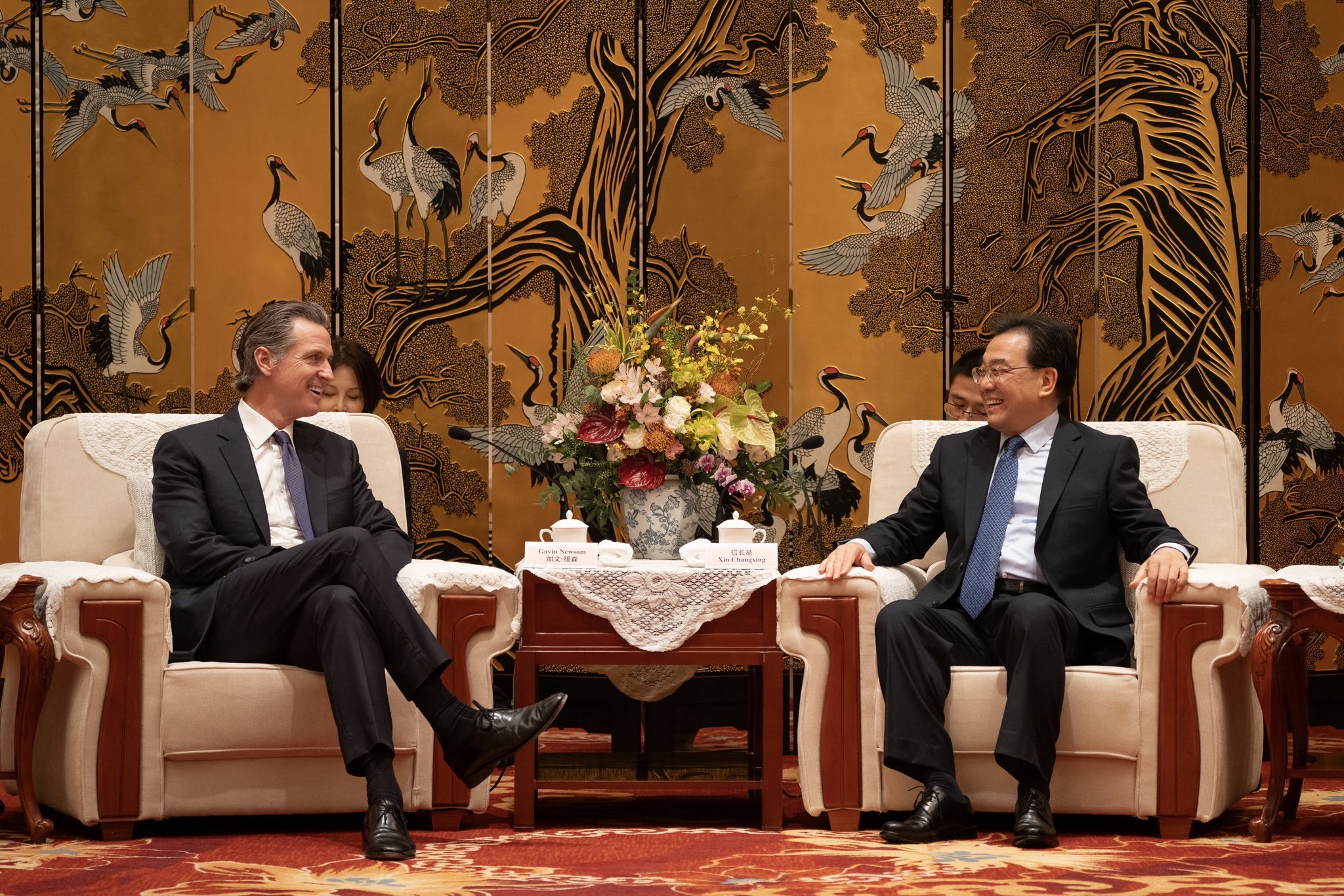
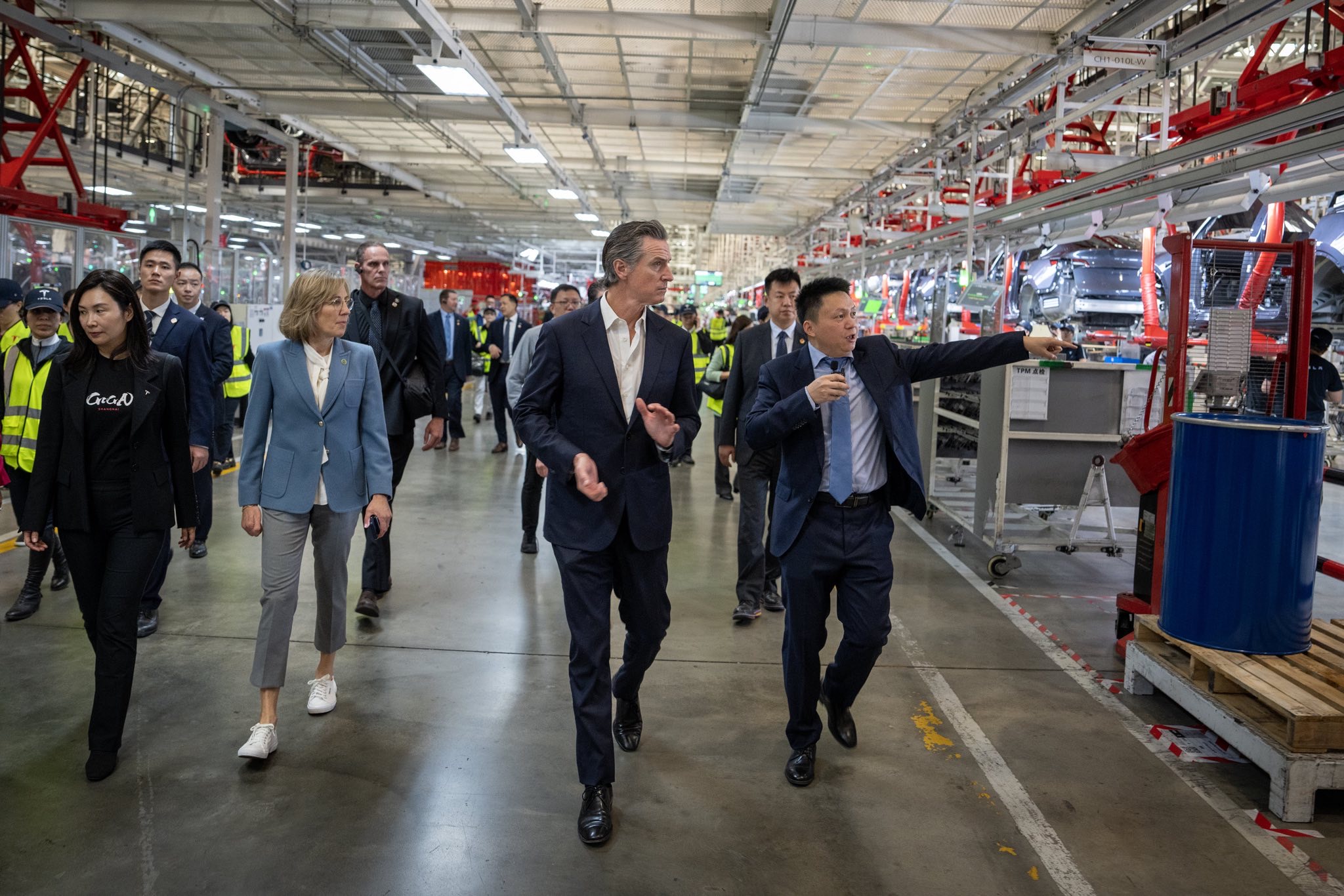
“Divorce is not an option. I do not want to see this relationship deteriorate – it serves no one.
We are better when we are cooperating and competing, not cold shouldering one another.”
Governor Gavin Newsom
Strengthening trade and tourism between California and China grows our economy and creates jobs. California and China do $166 billion in two-way trade with each other, making China California’s largest trading partner. While in China, Governor Newsom sought to strengthen that relationship that continues to support thousands of jobs and wages for countless families.
The Governor also focused on rebuilding tourism between California and China. Tourism from China once poured $4 billion into California’s economy but has never recovered since the pandemic – direct flights are currently just 15% of pre-pandemic levels. Reestablishing robust tourism to and from China promises to bring back billions of dollars and thousands of jobs to California. The Governor discussed increasing flights with Chinese leaders, and also met with United Airlines leaders to celebrate their recent announcement of adding flights to Shanghai and to Beijing. And this November, California will have a presence at the China International Import Expo focusing on increasing opportunities for California companies to enter the Chinese market.
CULTURAL TIES
Good ties between California and China help combat hate.

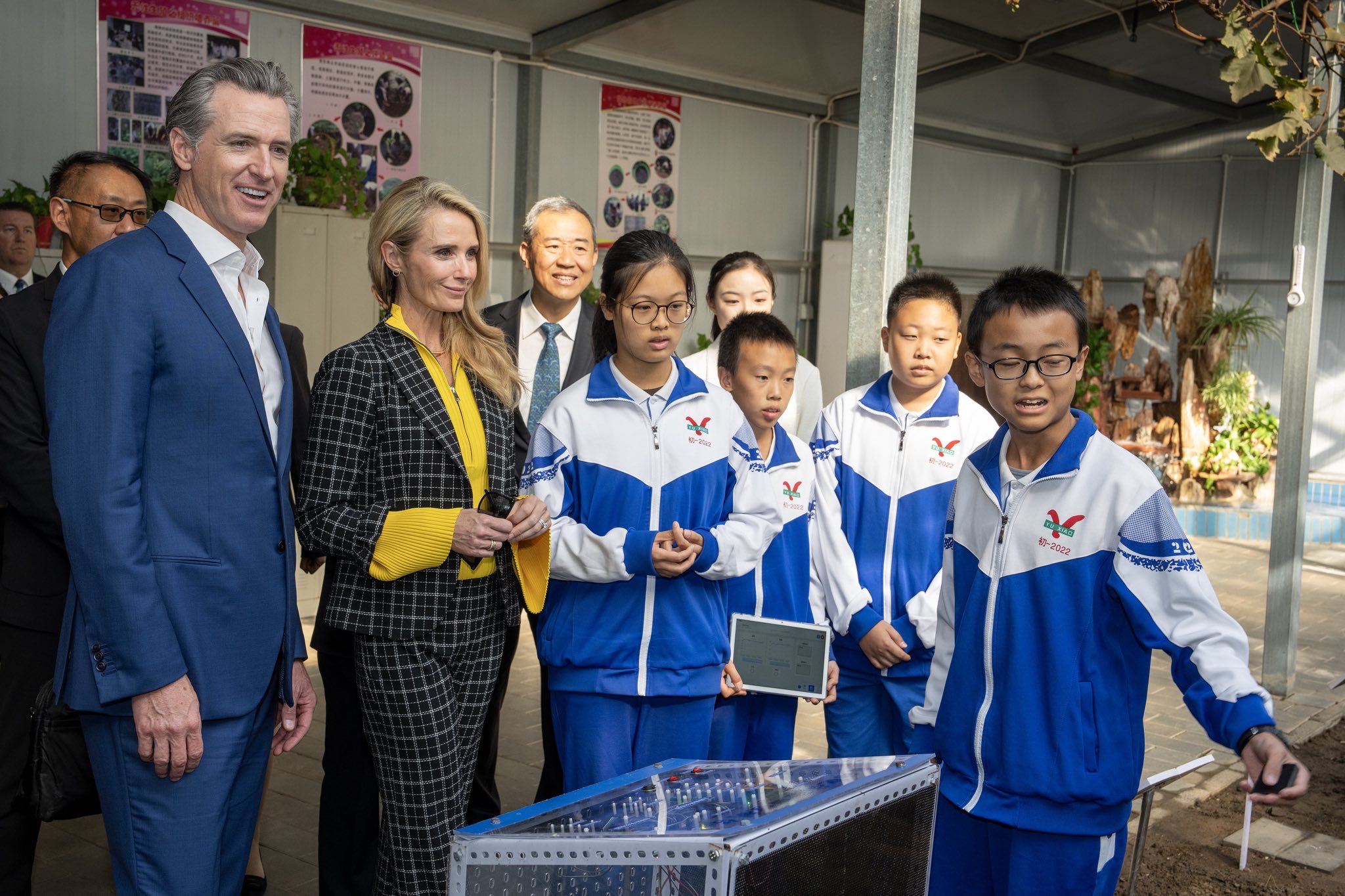
“California and China have a proud history of exchanging ideas and ideals, and it is critically important to maintain those strong relationships to find a future where we can all prosper together.”
Governor Gavin Newsom
Governor Newsom’s visit to China serves as a reminder of the importance of relationships and that more progress can be made if we approach one another with an open hand, not a closed fist. In 1980, San Francisco Mayor Dianne Feinstein forged the San Francisco-Shanghai Sister City relationship, the first of its kind between cities in China and the United States. When he served as Mayor of San Francisco, Gavin Newsom developed close ties with then-Mayor of Shanghai, Han Zheng, who is currently serving as the Vice President of China.
California is proud to be home to more than 2 million Chinese-Americans, more than any other state in the country. Our history, traditions, and cities are forever linked by the rich cultural heritage that Chinese immigrants continue to bring.
But anti-Asian hate, spurred in part by the COVID-19 pandemic and misinformation, has spread throughout the nation and in California, where Asian hate crimes increased by 177% as of 2021. While in China, Governor Newsom expressed his desire to strengthen people-to-people cultural exchange between California and China – a crucial tool to easing the fear and distrust that result in xenophobia.
Later this week, California Secretary of Government Operations Amy Tong is headed to China to participate in the U.S.-China Sister Cities Conference to help further strengthen ties between California and China.
During the Governor’s visit to Hong Kong University, Professor Peng Gong announced the University would host the China-California Bay-to-Bay climate forum in March of 2024, yet another opportunity to exchange policy and research between China and California.
Following the Governor’s meeting with Chinese President Xi Jinping, the first meeting with an American Governor since 2017, it was announced that President Biden and President Xi will meet at the Asia-Pacific Economic Cooperation Summit in San Francisco next month.
President Xi expressed hope that his meeting with Governor Newsom would help U.S.-China relations, according to Chinese state media. Chinese leaders also said that “subnational cooperation is an indispensable part” of the U.S.-China relationship and U.S. Ambassador to China Nicholas Burns, who joined the Governor for the meetings on Wednesday, agreed: “This was a very positive and consequential day for the United States.”
